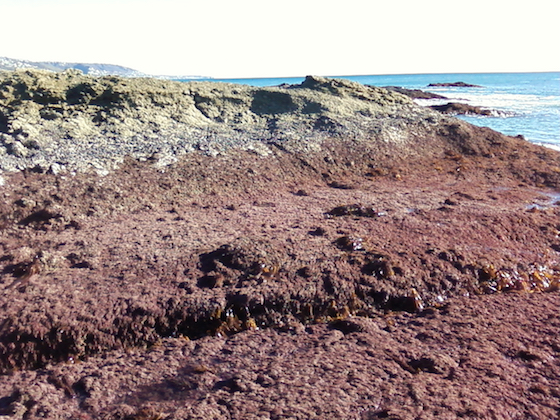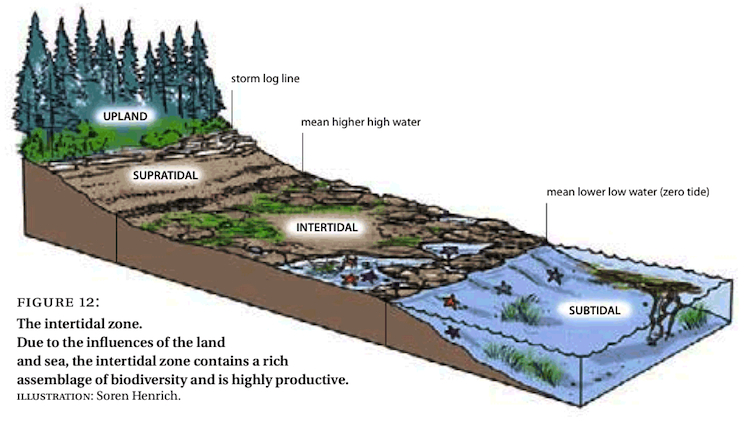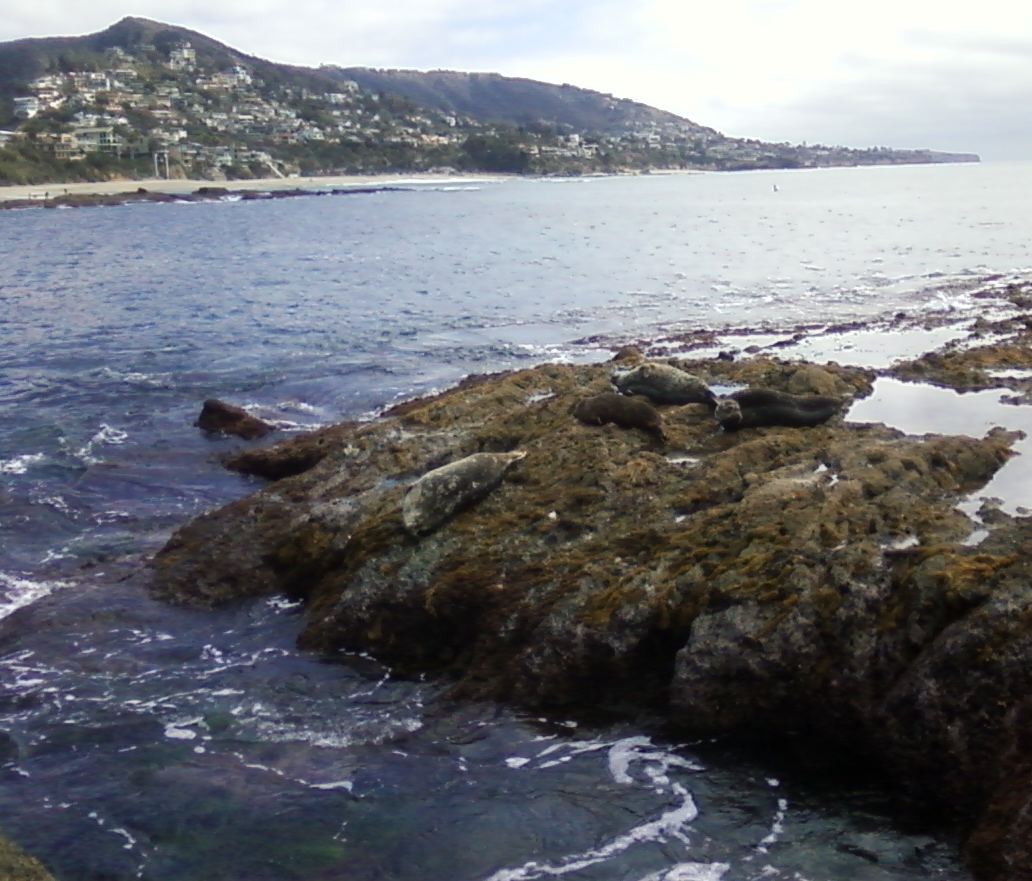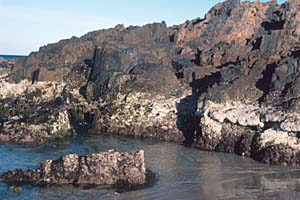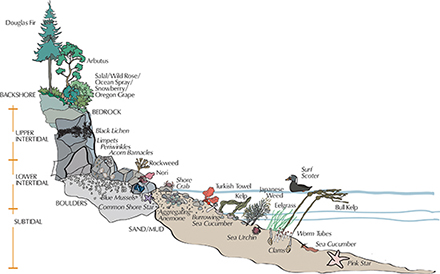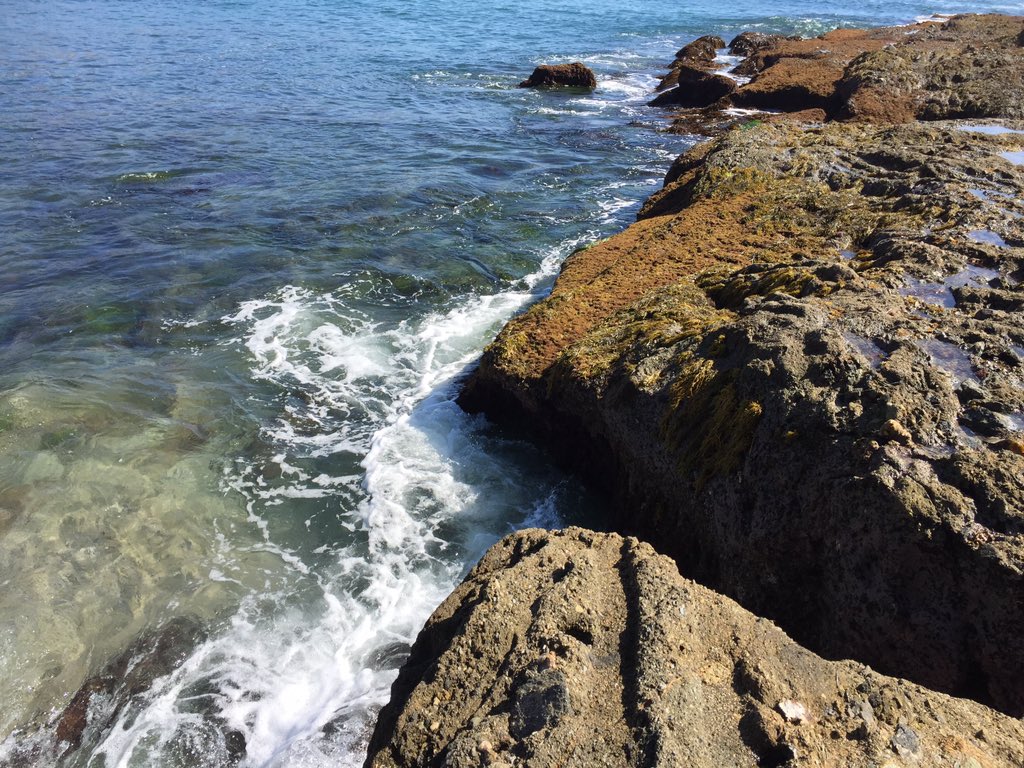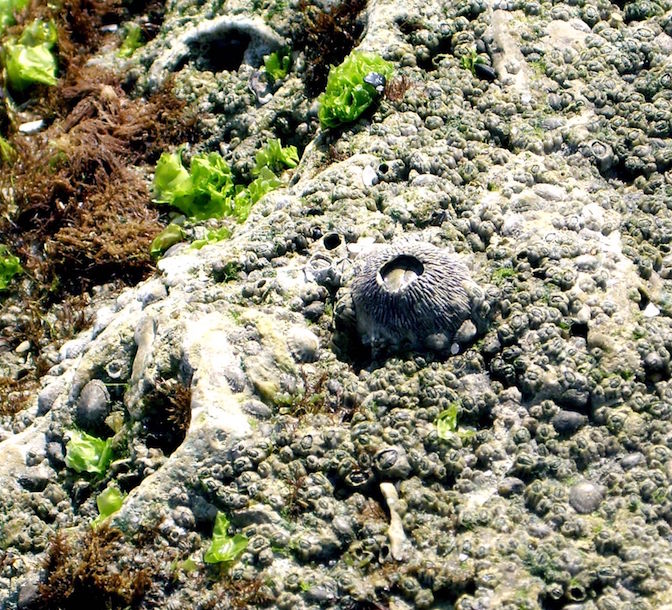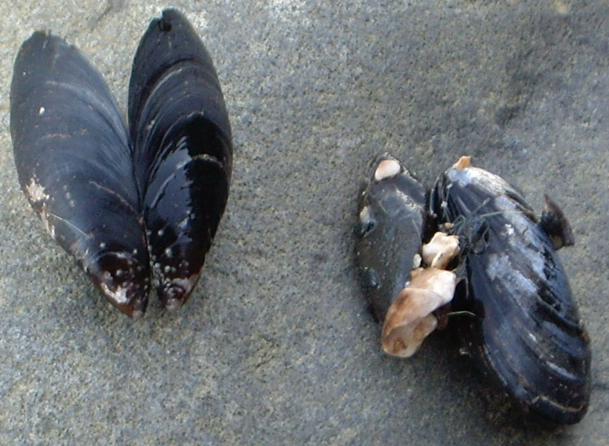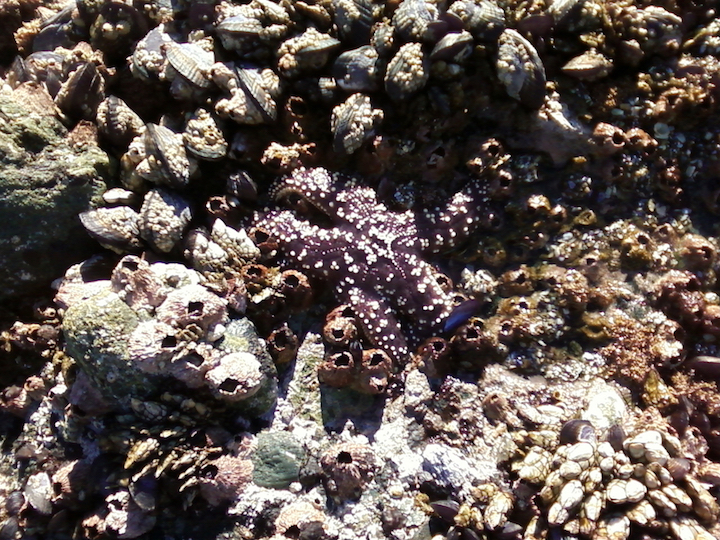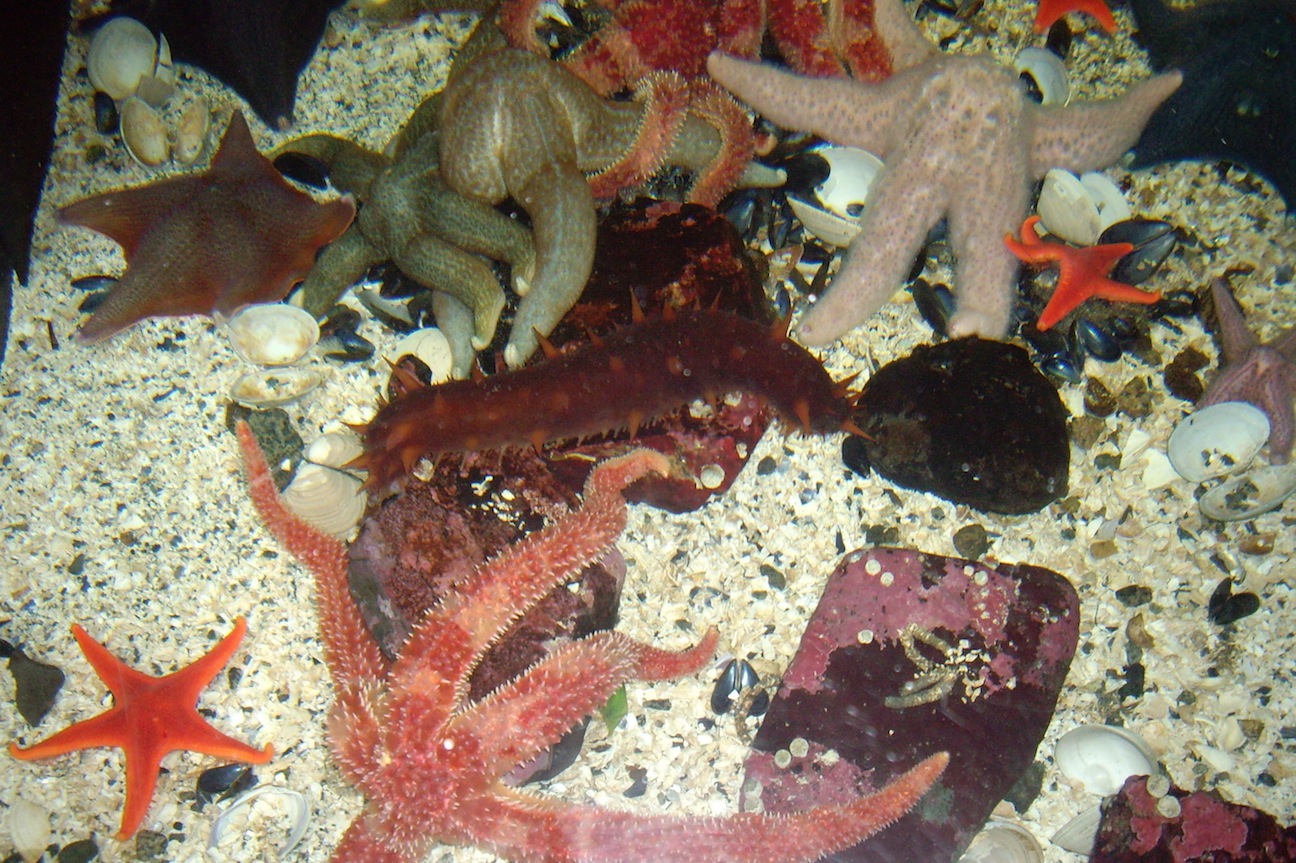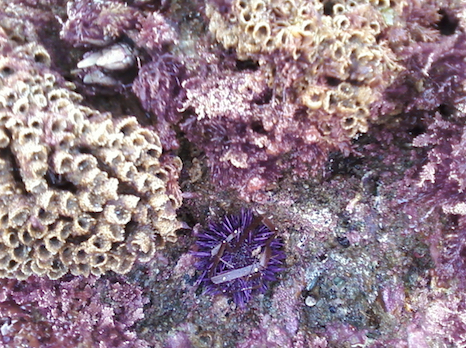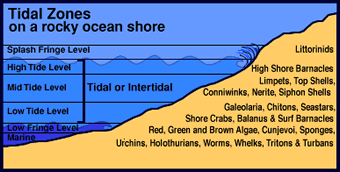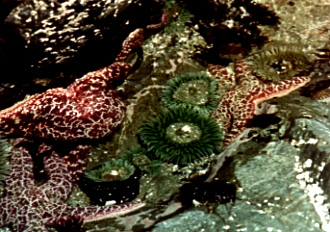Between Pacific Tides
Ed Ricketts, a marine biologist in Monterey, California in the 1930s, spent his life along the shores of the Pacific Ocean between Vancouver Island and the Sea of Cortez collecting and documenting the seashore life of California, Mexico, Oregon, Washington, and British Columbia. Marine biologist Joel Hedgpeth edited and revised this book to reveal these many living mysteries that comprise our tidal shorelines.
"These zones, however, are not immutably fixed according to tidal levels, but tend to spread wider and higher toward the region of heavier wave action. . . . can be seen on exposed coasts, along a vertical face set at right angles to the main direction of the waves."
Hedgpeth, Ricketts, Calvin, Between Pacific Tides. p. 7.
Backgrounds
A characteristic of the Pacific shore is that there are two unequal daily tides; meaning one high tide is not as extreme as the next and consequently one low tide is more extreme than the other each day. "The tides of the eastern side of the Pacific are also semidaily tides, but the highs and lows of the two cycles are quite uneven; these are known as mixed tides."
Hedgpeth, Ricketts, Calvin, Between Pacific Tides. p. 390.
Harbor seals, Phoca vitulina (Linnaeus, 1758), are the most common seal species and contain 5 subspecies. Eastern Pacific harbor seals, Phoca vitulina richardii (Gray, 1864), consists of an estimated 285,000 seals, distributed from the Pribilof and Aleutian Islands in Alaska as far south as Baja California. Four to seven sited at Arch Rock, Laguna Beach, California 11 October 2016 at noon; Aliso Creek estuary and Dana Point in distance.
"There is much variation in the appearance, physiology, and behavior of harbor seal species. They generally haulout in small scattered groups, although in protected bays and estuaries haulouts can number over 1,000 individuals. . . . A variety of habitats are used for hauling out, including rocky shores [as seen here above], reefs, sand and gravel beaches, intertidal mud and sand bars, piers, and, ice floes. Haulout sites are selected for protection from land predators, access to deep water and proximity to food sources, and protection from wind and waves."
MarineBio: Marine Species Database
Keep away from haulout areas because encroachment on these places will cause the seals to go elsewhere.
All marine mammals are wild animals. They are smart, instinctual, and curious; so always stay a long distance away from these and any wild species for reasons of health, safety, and respect for these animals who make their homes along the ocean shore.
Marine Mammal Protection Act, 1971
National Oceanic and Atmospheric Administration.
Hedgpeth comments about coastal zones:
"Indeed, reporting the intertidal distribution of organisms has been an occupation attractive to many authors. . . . In a sense, Between Pacific Tides is an expanded paper on intertidal zonation . . . the distribution of animals on the seashore according to the levels of occurrence and to attempt to use this zonal distribution as an aid to identification."
"That zonation occurs is obvious to all . . . . "
The number of zones that may be recognized on a seashore depends not only on complex variables of tide, climate, and the life subject to these variables, but also on the degree of refinement the student seeks to attain."BPP, p. 383-85-86.
Zones
1 Littorina
above the normal range of the highest high tides
Background
By nature, the creatures of this are from above the water column such as crabs, Acmea digitalis (limpets), and Littorina (marine snails).
The brown algaes of the higher intertidal rockweed zones.
2 High intertidal
Just below mean sea level; the normal range of ocean levels
Background
By nature, the creatures of this area come from the upper water column such as barnacles attached to the rocks, limpets and chitons that move feeding on marine algae, Balanus (barnacles), Mytilus (mussels) {seen above}, and Pollicipes (goose barnacles) {seen below}.
3 Middle intertidal
Typically within the normal range of tides meaning it is becomes wet and dry twice a day.
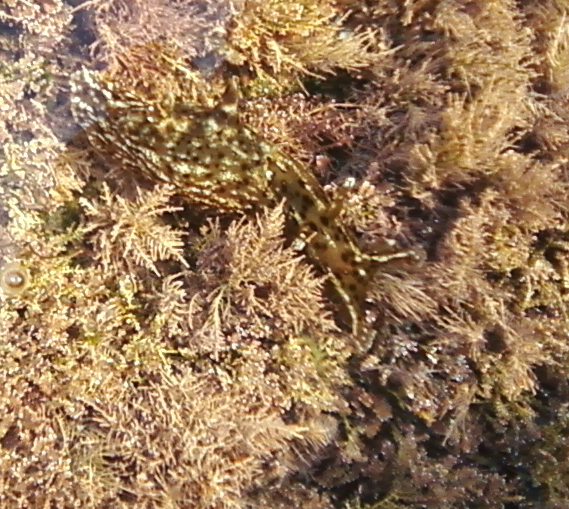
Seahare Aplysia californica amidst coralline algae.
Background
By nature, the creatures of this stretch are from the center of the tidal water column and have accustomed their lives and life-cycles to the daily rhythm of the tides such as mussels attached to the rocks, coralline algae, and sponges.
Echinoderm (Ochre Sea Star) amidst two species of barnacles, Mytilus (mussels) and Pollicipes or goose neck barnacles
4 Low intertidal
Normally uncovered by only the abnormal low tide range of the so-called "spring-tides."
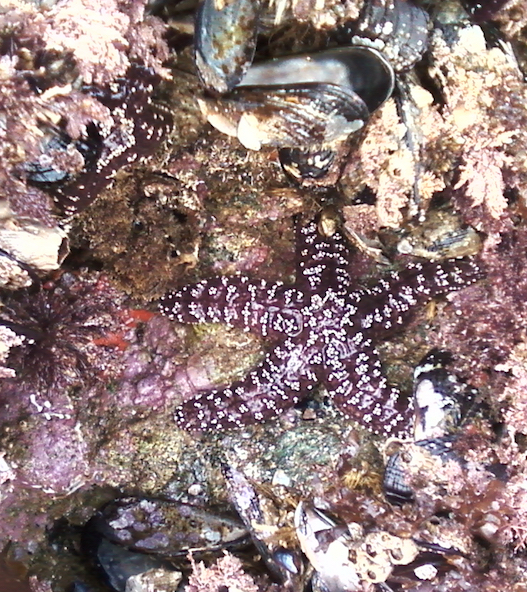
Pisaster, or Echinoderm among Semibalanus cariosus (Pallas 1788) and Mytilus californianus in low-tidal zone 12-14-16; Clement Bay, Ca.
Background
By nature, the creatures of this benthic region are from near the base of the near shore tidal water column and are not often subject to drying-out, or dessication. These may include sea stars (brittle stars, bat stars and Pisaster all echinoderms) and flowering marine grasses, sea urchins and sea squirts.
Sea Urchin among sand castle worms (white); The low-tidal zone 12-14-16; Clement Bay, Ca.Phragmatopoma californica is a suspension-feeding tubeworm that grows in sometimes large aggregations on boulders in the intertidal zone along the California coast. An interesting publication by researchers at the University of California, Los Angeles centres around causes of local distributions of the worms, focusing on 5 boulder fields at sites encompassing much of the species range. The major finding is that the aggregations are larger on the back or shoreward faces of boulders (in some cases numbering up to 10,000 tubes) diagrams showing tube orientations of Phragmatopoma californica on boulders on Coleman Beach, California in 2003 than on the front or seaward faces. Orientation of the worm-tubes differs significantly between front and back boulder faces, with growth being in the direction of predominant water flow around the boulder. Thus, tube orientation on the front faces is angled to the right or left, while on the back faces tube orientation is more perpendicular to the boulder surface.
More about these Sabellariid reefs sand worms
![]()
The importance of Insular Seas and Marine Shores
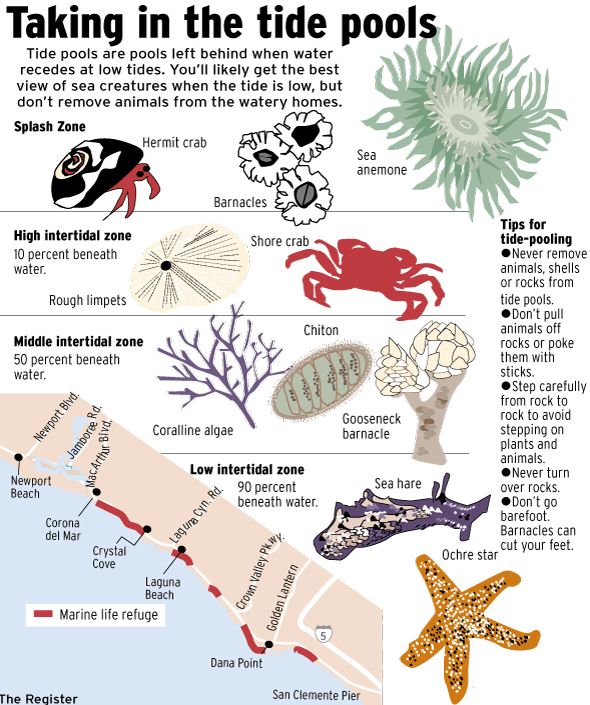
Protecting marine life is everyone's opportunity to improve the planet by letting these places be less disturbed.
Visualizing the zones along the shore:
Pisaster (Pisaster ochraceus), the large starfish (These three red echinoderms amidst several large green anemones –Anthopleura xanthogrammica– pictured here) have suffered from population loss due to disease in the recent half-decade once hunted in large numbers in the low intertidal and sub-tidal zones and were considered a keystone species.
![]()
-
California Academy of the Sciences.
-
Monterey Bay Aquarium.
-
Ecology Center, Ocean Institute, Dana Point.
-
Elkhorn Slough National Estuarine Reserve camera
-
Laguna Ocean Foundation
-
UC Santa Cruz's Pacific Rocky Intertidal Monitoring: Trends and Synthesis
-
Cal State University Long Beach "Reproduction and development of southern California marine invertebrates" web site.
-
DK Find Out– 4 kids to learn about tide-pools
-
Marine species identification portal
The MarineBio Conservation Society
Harbor Seals, Phoca vitulina
Sea Otters, Enhydra lutris lutris
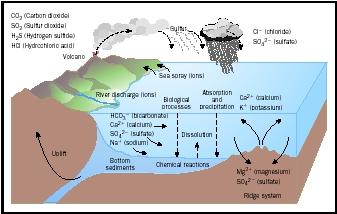
Oceans are huge absorbing factors in the amount of heat-trapping, carbon dioxide in our air.
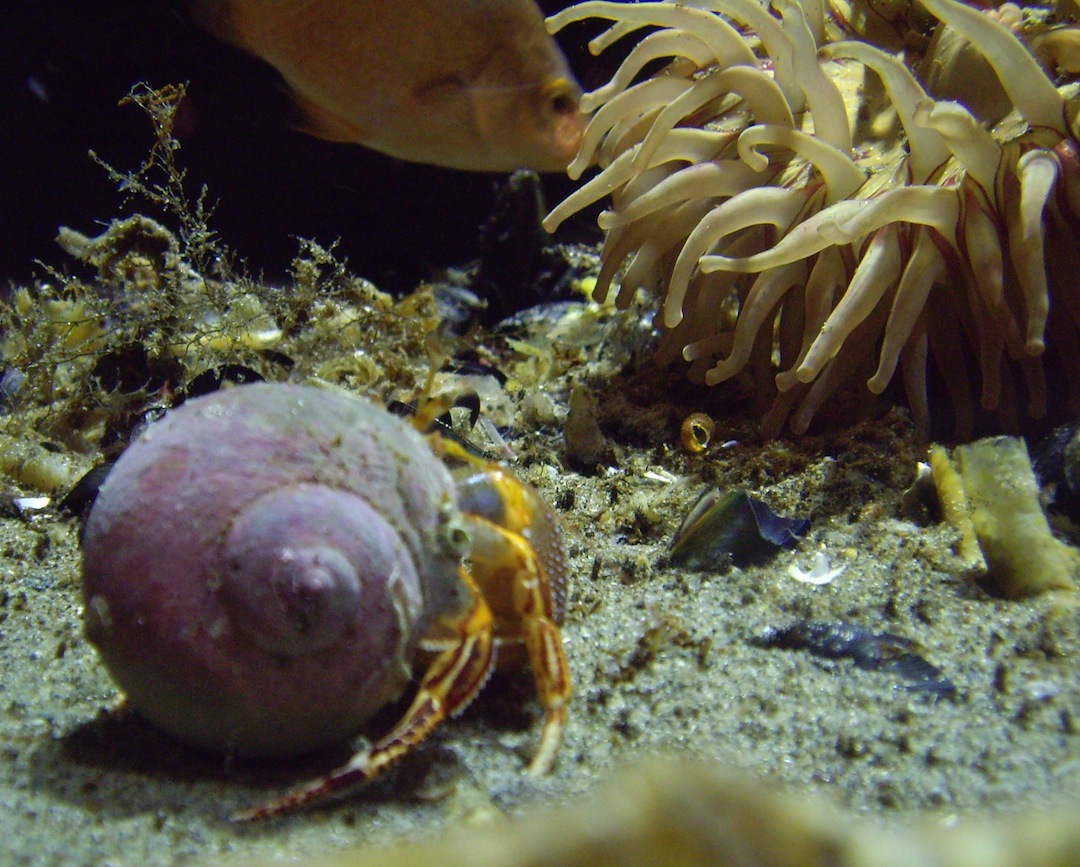
Hermit crab in foreground with anemone in background are part of the benthic invertebrates of the ocean shore.
Notes:
"The current bout of this wasting syndrome was first noted in ochre stars (Pisaster ochraceus) in June 2013 along the coast of Washington state during monitoring surveys conducted by MARINe researchers from Olympic National Park (ONP). . . . . In mid-December 2013, substantial numbers of wasting stars were spotted around southern California."
Phragmatopoma californica (Fewkes 1889)
"Sandcastle worm (Phragmatopoma californica), a segmented marine invertebrate commonly found along the California coast."
Commonly referred to as the sandcastle worms these first noted commonly for their submarine adhesive qualities, see UCSB; The Current, "Cling-On Warriors Sandcastle worms serve as inspiration for a new type of underwater adhesive being developed at UCSB."
By Sonia Fernandez
Monday, February 1, 2016 - 14:45
Santa Barbara, CA
Sources:
Melissa Miner, Rani Gaddam, and Melissa Douglas, UC Santa Cruz Marine Observation: Pacific Intertidal Monitoring; October 26, 2016.
"Viral metagenomic investigations revealed the sea star-associated densovirus (SSaDV) as the most likely candidate virus associated with tissues from symptomatic asteroids. Quantification of SSaDV during transmission trials indicated that progression of SSWD paralleled increased SSaDV load. In field surveys, SSaDV loads were more abundant in symptomatic than in asymptomatic asteroids. SSaDV could be detected in plankton, sediments and in nonasteroid echinoderms, providing a possible mechanism for viral spread. SSaDV was detected in museum specimens of asteroids from 1942, . . . "
Hewson et. al. "Densovirus associated with sea-star wasting disease and mass mortality," Proceedings of the National Academy of Science, (PNAS) :vol. 111 no. 48 > Ian Hewson, 17278–17283, doi: 10.1073/pnas.1416625111. Full essay see: PNAS link.
Kirtley & Tanner (1968) "Sabellariid worms; builders of a major reef type" David W. Kirtley and William F. Tanner, Journal of Sedimentary Research. March 1, 1968: vol. 38 no. 1, pages 73-78.
Cal State University Long Beach Reproduction and development of southern California marine invertebrates" web site: Annelida, Sabellariidae, Phragmatopoma californica (Fewkes 1889).
http://web.csulb.edu/colleges/cnsm/depts/biology/invertebrate_reproduction/.
Natural History of Orange County, California
Selected trees of Orange County, California.

